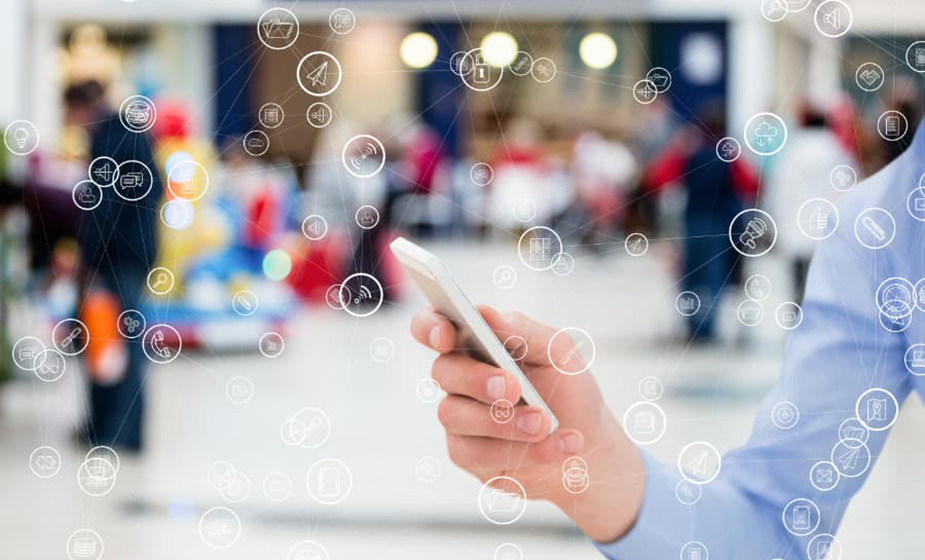Steps to tech success
With technology becoming increasingly dominating, the business world is evolving at an extraordinary pace. For brands and retailers, this means ensuring they’re using technology to enhance the customer experience, adapting to customer demands and making shopping quick, convenient and relevant.
So, how you can strategically introduce technology to futureproof your business, build further loyalty and offer even more convenience for your customers? Here are our top tips for success:

Get the fundamentals right
Firstly, it’s important to get the simple stuff right; for example, in-store technology is all well and good, but if you haven’t considered how easy it is for a shopper to navigate their way around the store, then it’s a fruitless addition. So, think about keeping shelving no higher than three or four racks high, allowing customers to see what they need – or could need – easily. Eyeline is still very much ‘buy-line’.
A looped floor plan also works well for queue management and leading shoppers along a set pathway. This way, you can promote key products and services along the customer’s journey to the point of purchase. For example, tempting shoppers with ranges tailored to different times of day near the till to ensure a maximum chance of a sale.
Attract attention
Why not explore how digital signage can attract consumers’ attention; displaying details of special offers or limited-edition products can draw in customers’ eyes and encourage them to increase their basket spend.
It’s little wonder that digital signage is one of the most popular developments to be implemented; it’s an innovative tool to optimise communication by broadcasting product content in real-time on screens in-store. It’s an ideal way to quickly manage advertisement changes, media content and offers positive experiences to increase recall and influence shopper decisions.
Tap into your data
What is clear is that knowledge is power, so adopting technology, such as in-store audience analysis and real-time traffic analysis, will provide valuable data to help shape future strategy. What’s more, utilising smart shelves equipped with radio frequency identification (RFID) readers can help to notify the back-end system of stock depletion, enabling you to respond and react to sales in real-time.
Create frictionless shopping
In today’s retail world, a disruptive service is unacceptable – consumers will only shop at retailers that value their time. Frictionless shopping eliminates any barriers that may slow down the buying process, whether it be through distraction or interruption.
Take Amazon, for example, which is paving the way for the future of retail, and creating a truly frictionless shopping experience. The tech giant has taken speed and convenience to a new level, launching the first checkout-free shop – a flagship to frictionless shopping. Customers can walk into the shop with their Amazon Go app and take items off the shelves, put them straight into their bags and leave – no queues, cashiers or paper receipts necessary. Using sensors and cameras, the app knows exactly what items you’ve taken, and sends a bill directly to your account as you leave – it even tells you exactly how long you spent in the shop.
Now, this may be a step too far for most local retailers, but more basic tactics, such as paperless receipts and even exploring scan-as-you-shop technology – pioneered by Tesco in recent years – could be the answer to combining consumer-led trends and technology as a way to reduce friction.
Adopt mobile technology
We cannot deny that smartphones are changing the retail landscape. They help us to research, compare and purchase products not just online, but also in stores. The continued rise of mobile payments, improvements in AI and machine learning, and increased adoption of smart devices are increasing the need for a truly seamless experience. For retailers, in particular, this means getting to grips with in-store mobile engagement.
If you’re considering adding an in-store mobile experience to your offering, you should ensure that it cuts down the time it takes, and the steps needed to create a perception of value for consumers. Options could be using an app to allow consumers to order ahead, pay for a product, see live comparisons or view exclusive offers.
Reach out to customers
Why not capitalise on mobile developments even further by implementing beacon technology in store? Beacons are small, wireless transmitters that use low-energy Bluetooth technology to send signals to other smart devices nearby. Essentially, they allow you to connect and transmit information making location-based searching and interaction easier and more accurate.
This means that you can communicate directly with customers that aren’t in store, but within range, providing them with notifications on anything from a new range in your shop, to more complex messages such as product discounts and reward schemes.
Customers first
Given the chance, most retailers would be sure to want to revamp their store as often as they could to keep the customer experience is as fresh as possible. Of course, no-one has an endless budget so it’s important to consider what changes will benefit your store the most. If scan-as-you-shop technology is likely to benefit your customer base, think about piloting it with a specific product category or perhaps island displays of stock would make better use of the space available.
Remember: you know your target audience, so consider what’s likely to make their in-store experience better and generate return custom.